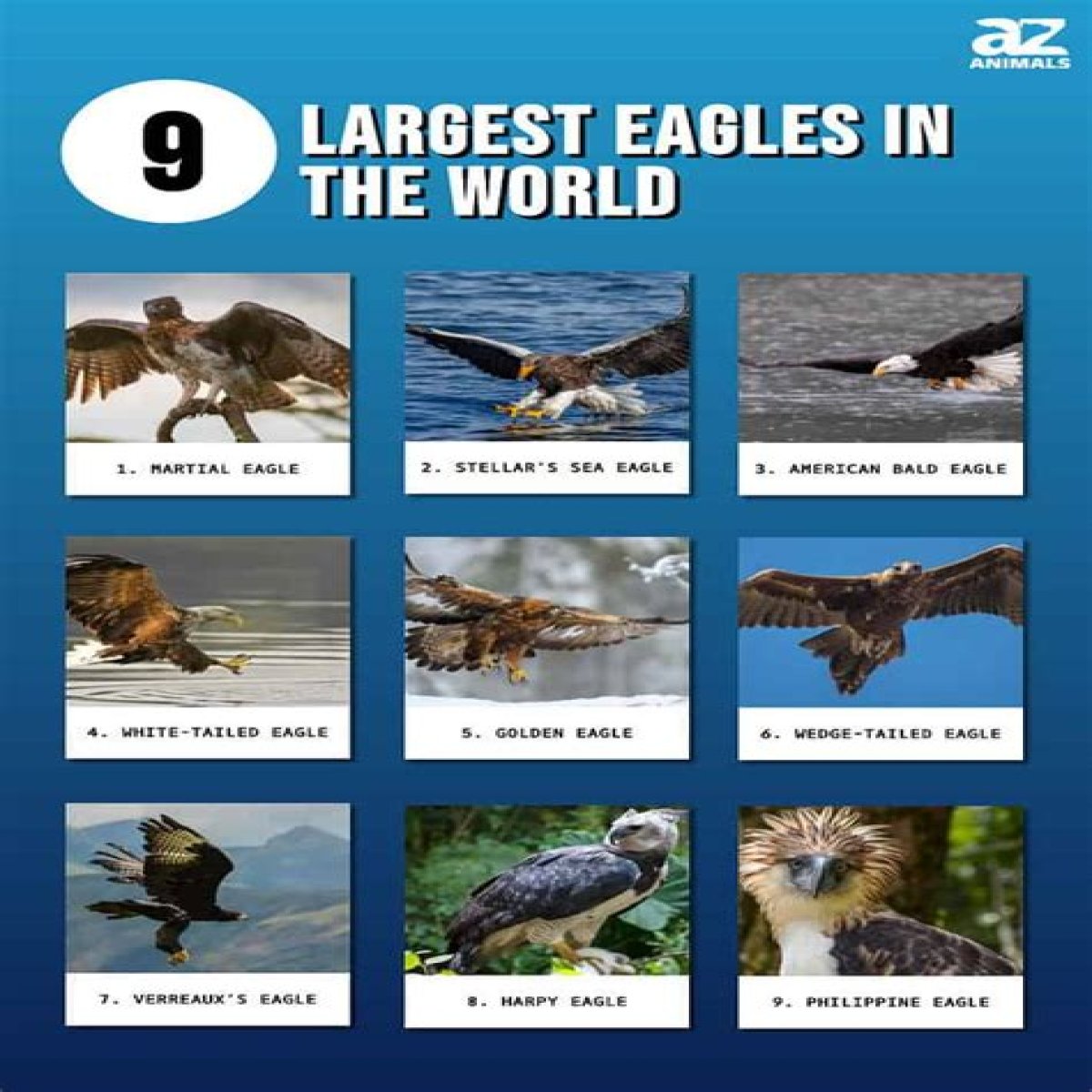Eagles are magnificent birds of prey that have captured the imagination of people across the globe. Among them, the biggest eagle stands out not just for its size but also for its impressive hunting skills and majestic presence. In this article, we will delve deep into the world of the largest eagle species, exploring their characteristics, habitats, behavior, and conservation status. Whether you are an ornithologist, a bird watcher, or simply an enthusiast, this comprehensive guide will provide you with valuable insights into these magnificent creatures.
From the stunning wingspan of the Steller’s Sea Eagle to the powerful build of the Andean Condor, the biggest eagles are not just fascinating due to their size; they also play critical roles in their ecosystems. As apex predators, they help maintain the balance of nature by controlling prey populations. However, many of these majestic birds are under threat due to habitat loss and climate change. Thus, understanding their biology and behavior is essential for their conservation.
Throughout this article, we will uncover intriguing facts about the largest eagles, their habitats, and the challenges they face. This guide aims to provide expert knowledge and reliable information, ensuring that readers can appreciate and advocate for these incredible birds. So let’s soar into the world of the biggest eagle!
Table of Contents
1. The Biggest Eagle Species
The title of the biggest eagle is often attributed to the Steller’s Sea Eagle (Haliaeetus pelagicus). Native to the coastal regions of northeastern Asia, this eagle has a wingspan that can reach up to 2.5 meters (8.2 feet) and weighs between 3 to 6.3 kilograms (6.6 to 14 pounds).
Another contender for the title is the Andean Condor (Vultur gryphus), which is technically a vulture but is often included in discussions about large birds of prey due to its impressive wingspan of up to 3.3 meters (10.8 feet). However, it is important to note that the Andean Condor is not classified strictly as an eagle.
2. Characteristics of Big Eagles
Physical Characteristics
Big eagles are characterized by their strong, hooked beaks and powerful talons, which they use for hunting and feeding. Here are some key physical features:
- Wingspan: The Steller’s Sea Eagle has one of the largest wingspans among eagles.
- Plumage: These eagles often have striking plumage, with dark feathers contrasting against white heads and tails.
- Size: Adult eagles can weigh several kilograms, making them formidable predators.
Behavioral Traits
In addition to their physical attributes, big eagles exhibit fascinating behaviors:
- Hunting Skills: They are known for their keen eyesight and hunting prowess.
- Territorial Behavior: Many species are highly territorial, defending their hunting grounds aggressively.
- Social Structures: Some eagles are solitary, while others may hunt in pairs or small groups.
3. Habitat and Distribution
The habitat of the biggest eagles varies significantly based on species:
- Steller’s Sea Eagle: Prefers coastal areas, especially near rivers and lakes.
- Golden Eagle: Found in a variety of habitats, including mountainous regions and open fields.
- Harpy Eagle: Inhabits tropical rainforests and is often found near rivers.
4. Hunting and Feeding Habits
Big eagles are apex predators, which means they have few natural enemies. Their diet mainly consists of:
- Fish: The Steller’s Sea Eagle primarily feeds on fish, utilizing its sharp talons to catch them.
- Birds: Some species hunt smaller birds as part of their diet.
- Mammals: Larger eagles may hunt small mammals, including rabbits and rodents.
5. Breeding and Nesting
Breeding habits among the biggest eagles are equally fascinating. Here’s what you need to know:
- Nesting Sites: Eagles build large nests, often in tall trees or cliffs.
- Eggs: Most species lay 1 to 3 eggs, which both parents incubate.
- Chick Development: Chicks are generally altricial, meaning they are born helpless and require parental care.
6. Conservation Status
Many of the biggest eagle species face threats due to habitat loss, hunting, and climate change. The International Union for Conservation of Nature (IUCN) has classified several eagle species as vulnerable or endangered. Conservation efforts are critical to ensure their survival:
- Protected Areas: Establishing protected habitats to safeguard nesting sites.
- Public Awareness: Educating communities about the importance of eagles in the ecosystem.
- Research Initiatives: Conducting studies to monitor populations and health.
7. Fascinating Facts About Eagles
Here are some intriguing facts about the biggest eagles:
- Vision: Eagles can see up to 8 times better than humans, allowing them to spot prey from great distances.
- Lifespan: Many eagles can live for 20 years or more in the wild.
- Cultural Significance: Eagles are often symbols of power and freedom in various cultures around the world.
8. Conclusion
In conclusion, the biggest eagle, particularly the Steller’s Sea Eagle, represents not only the beauty of nature but also the challenges that wildlife faces in today’s world. Understanding these magnificent creatures is crucial for conservation efforts and ensuring their survival for future generations. We encourage readers to share their thoughts in the comments below, spread awareness about eagle conservation, and explore more articles on wildlife and nature.
Thank you for taking the time to learn about the biggest eagle. We hope you found this article informative and inspiring, and we invite you to return for more engaging content!
Lara Gomez: A Rising Star In The Entertainment IndustryUnveiling The Devilish Goddess: A Deep Dive Into The Enigmatic FigureWembanyama Hands: The Secret Behind Victor Wembanyama's Dominance On The Court
